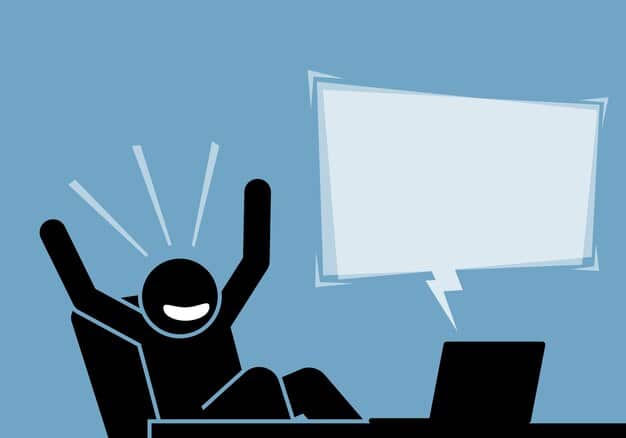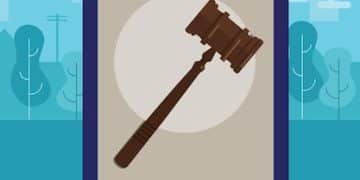Is It Just a Joke? Navigating Online Humor and Harassment

The line between online humor and harassment is increasingly blurred, necessitating a critical examination of intent, impact, and context to determine when a joke crosses into harmful territory.
In the digital age, humor has found a new playground: the internet. But what happens when a seemingly innocent joke veers into the realm of harassment? This article explores the nuances of online humor and its potential to cross the line, offering insights into recognizing and addressing problematic behaviors.
The Evolution of Online Humor
Online humor has evolved significantly since the early days of the internet. What started as simple text-based jokes and emoticons has transformed into a complex ecosystem of memes, GIFs, viral videos, and interactive content. This evolution has brought new forms of comedy but it also presents new challenges in discerning what is acceptable and what is not.
The internet’s anonymity and reach have created an environment where humor can quickly spread, but also cause significant harm. Understanding this transformative journey is crucial in addressing the issue of online harassment disguised as humor.
From Forums to Feeds: A Historical Overview
The early internet forums and chat rooms were fertile grounds for the first forms of online humor. These communities developed their own inside jokes and shared content that was often niche and obscure. Over time, as social media platforms emerged, humor became more visual and shareable.
The shift from text to images and videos allowed jokes to spread faster and to wider audiences. Platforms like YouTube, Facebook, and Twitter became hubs for comedic content, with users creating and sharing memes that quickly went viral. This democratization of humor also opened the door for more problematic content to gain traction.
The Rise of Memes and Viral Content
Memes, as a form of online humor, rely on relatability and shareability. They often take the form of images or videos with text overlays that comment on current events, pop culture, or everyday experiences. While many are harmless, some memes can perpetuate stereotypes, spread misinformation, or even target individuals for ridicule.
Viral content, including comedic videos and stunts, also plays a significant role in shaping online humor. However, what may start as a lighthearted prank can quickly escalate into a form of harassment if it targets specific individuals or groups with malicious intent.
Online humor has evolved from simple text jokes to a complex ecosystem of memes and viral content. While much of it is harmless, the potential for harm when humor becomes harassment is significant and must be addressed.

Defining the Line: What Constitutes Online Harassment?
Defining the line between harmless humor and online harassment is essential to fostering a safer and more respectful online environment. While humor is subjective and can vary widely, certain behaviors undeniably cross into harassment based on their intent, impact, and context.
Understanding these factors is critical for both content creators and consumers, as well as for those responsible for moderating online platforms.
Intent vs. Impact
The intent behind a joke is often a primary consideration when assessing whether it constitutes harassment. Was the joke intended to be harmless fun or was it designed to demean, belittle, or target a specific individual or group? However, intent alone is not sufficient to determine whether a joke is acceptable. The impact of the joke on the recipient also matters.
Even if the intent was not malicious, if the joke results in the recipient feeling threatened, humiliated, or unsafe, it can be considered a form of harassment. This is particularly true when the joke targets vulnerable groups or individuals.
- Intent: The purpose or motivation behind the joke.
- Impact: The effect the joke has on the recipient.
- Vulnerable Groups: Populations that are particularly susceptible to harm.
Context Matters
The context in which a joke is delivered is also crucial in determining whether it crosses the line into harassment. A joke that might be acceptable within a close-knit group of friends could be entirely inappropriate when shared publicly online.
Factors such as the power dynamics between the speaker and the recipient, the platform on which the joke is shared, and the overall tone of the conversation all contribute to the context. Jokes that are made in a public forum, or that target individuals with less power or influence, are more likely to constitute harassment.
- Power Dynamics: The relationship of authority or influence between individuals.
- Platform: The digital space where the joke is shared.
- Public Forum: Open spaces where many can view and engage with content.
Cyberbullying and Doxing
When online humor escalates into sustained and targeted attacks against an individual, it becomes cyberbullying. Cyberbullying involves repeated and malicious behavior designed to harass, intimidate, or humiliate a victim. This can include spreading rumors, posting embarrassing photos or videos, or impersonating the victim online.
Doxing, the practice of revealing someone’s personal information online without their consent, is another form of online harassment that can have serious consequences. When personal information is exposed, victims may be at risk of stalking, harassment, and even physical harm. Cyberbullying and doxing are never jokes; they are serious forms of online harassment that should be addressed accordingly.
Determining whether online humor crosses the line into harassment requires careful consideration of intent, impact, context, cyberbullying and doxing. By understanding these factors, individuals can help create a more respectful and safer online environment for everyone.
The Role of Anonymity and Online Disinhibition
Anonymity and online disinhibition play a significant role in why online humor can often cross the line into harassment. The perceived anonymity of the internet can embolden individuals to say things they would never say in person, while online disinhibition can lower inhibitions and increase the likelihood of engaging in harmful behavior.
Understanding these psychological factors is crucial for addressing the issue of online harassment disguised as humor. When individuals feel they can hide behind a screen, they are more likely to engage in behaviors they would otherwise avoid.
The Veil of Anonymity
The anonymity afforded by the internet can create a sense of detachment from the consequences of one’s actions. When individuals do not have to reveal their real identities, they may feel less accountable for their behavior. This can lead to an increase in aggressive, offensive, and harassing behavior, including jokes that cross the line.
Anonymity can also make it more difficult for victims of online harassment to identify and hold their abusers accountable. This can create a sense of impunity for harassers, who may feel they can get away with their behavior without fear of repercussions.
- Perceived Anonymity: The belief that one’s identity is hidden online.
- Accountability: The responsibility to answer for one’s actions.
- Impunity: Freedom from punishment or negative consequences.
Online Disinhibition Effect
The online disinhibition effect refers to the tendency for people to behave differently online than they would in person. This effect is often attributed to a combination of factors, including anonymity, invisibility, asynchronicity and a lack of immediate feedback.
When individuals communicate online, they may feel less inhibited due to the lack of face-to-face interaction and the time delay between messages. This can lead to an increase in self-disclosure, aggression, and other behaviors that are typically suppressed in face-to-face interactions. In the context of online humor, this can result in jokes that are more offensive, hurtful, or harassing than they would be in a real-life setting.
Deindividuation and Group Dynamics
Online environments can also lead to deindividuation, a psychological phenomenon in which individuals lose their sense of personal identity and self-awareness within a group. When individuals feel they are part of a larger group, they may be more likely to engage in behaviors that they would not do on their own.
In the context of online humor, this can manifest as group pile-ons or coordinated harassment campaigns targeting individuals. The anonymity and disinhibition of the internet can exacerbate these group dynamics, making it easier for individuals to engage in harmful behavior without feeling personally responsible.
Anonymity and online disinhibition are powerful psychological factors that can contribute to the escalation of online humor into harassment. Addressing these factors is essential for creating a safer and more respectful online environment by promoting accountability and encouraging responsible behavior.

Legal and Ethical Considerations
Navigating the legal and ethical considerations surrounding online humor and harassment is crucial for content creators, platform moderators, and users. While freedom of speech is a fundamental right, it is not absolute, and there are legal and ethical limits to what can be said or shared online.
Understanding these boundaries is essential for preventing online humor from crossing the line into harmful or illegal behavior.
Freedom of Speech vs. Harassment
The First Amendment to the United States Constitution protects freedom of speech, but this protection is not unlimited. The Supreme Court has recognized certain categories of speech that are not protected, including defamation, incitement to violence, and true threats.
Online harassment, particularly when it targets individuals based on their race, gender, religion, or other protected characteristics, may not be protected by the First Amendment. Content creators, platform moderators, and users need to be aware of these legal limits and avoid engaging in behavior that could be considered harassment.
- Defamation: False statements that harm someone’s reputation.
- Incitement to Violence: Speech that is likely to provoke violence.
- True Threats: Statements that convey a serious intent to cause harm.
Platform Responsibilities
Social media platforms and online forums have a responsibility to create and enforce policies that prevent online harassment. This includes establishing clear community guidelines, providing mechanisms for users to report harassment, and taking swift action against those who violate the rules.
However, platforms must also balance their responsibility to prevent harassment with the need to protect freedom of speech. This can be a difficult balancing act, as some content may be offensive or controversial without necessarily constituting harassment. Platforms must carefully consider the context and impact of content when making decisions about whether to remove it.
Ethical Guidelines for Content Creators
Content creators also have an ethical responsibility to ensure that their humor does not cross the line into harassment. This includes being mindful of the potential impact of their jokes on others, avoiding harmful stereotypes, and refraining from targeting individuals for ridicule.
Content creators should also be willing to take responsibility for their actions and apologize if they make a mistake. By following ethical guidelines, content creators can contribute to a more respectful and safer online environment for everyone.
Legal and ethical considerations play a vital role in regulating online humor and preventing harassment. Content creators, platform moderators, and users must be aware of these boundaries to ensure that online interactions remain respectful and lawful, protecting individuals from harm while upholding principles of free expression.
Strategies for Addressing Online Harassment
Addressing online harassment requires a multi-faceted approach involving individuals, communities, and platforms. Each group has a role to play in preventing and responding to harassment, creating a safer and more respectful online environment for everyone.
By employing effective strategies, it is possible to mitigate the impact of online harassment and foster a culture of accountability.
Individual Actions
Individuals can take several steps to protect themselves and others from online harassment. This includes setting privacy settings on social media accounts, blocking or muting harassers, and reporting abusive behavior to the platform.
It’s also important to document instances of harassment, as this may be helpful if legal action becomes necessary. Additionally, individuals can support victims of harassment by offering emotional support, validating their experiences, and encouraging them to seek help if needed.
- Privacy Settings: Controls that allow users to manage who can see their information.
- Document Harassment: Keeping records of incidents.
- Offer Support: Providing emotional and practical assistance to victims.
Community Standards and Moderation
Online communities can establish and enforce standards of behavior that discourage harassment. This includes creating clear community guidelines that prohibit harassment, appointing moderators to enforce those guidelines, and fostering a culture of respect and inclusivity.
Communities can also implement strategies for responding to harassment, such as removing abusive content, banning harassers from the community, and supporting victims of harassment.
Platform Policies and Enforcement
Social media platforms and online forums have a critical role to play in preventing and addressing online harassment. This includes developing comprehensive policies that prohibit harassment, implementing effective mechanisms for users to report harassment, and taking swift action against those who violate the policies.
Platforms should also invest in technology and human resources to improve their ability to detect and respond to harassment. This may include using artificial intelligence to identify abusive content, hiring more moderators, and providing training to employees on how to handle harassment reports.
Addressing online harassment requires coordinated efforts from individuals, communities, and platforms. By implementing effective strategies, online interactions can be fostered to be respectful. This will allow creating a support system for a safer and more inclusive digital ecosystem.
Promoting Responsible Online Humor
Promoting responsible online humor is essential for navigating the complexities of digital interactions. Responsible humor involves being mindful of the potential impact of jokes on others, avoiding harmful stereotypes, and promoting empathy and respect in online interactions.
By encouraging responsible humor, we can foster a more positive and inclusive online environment that values both laughter and sensitivity.
Education and Awareness
Education and awareness are key to promoting responsible online humor. This includes educating individuals about the potential impact of their jokes on others, promoting empathy and respect, and challenging harmful stereotypes and biases.
Schools, community organizations, and online platforms can play a role in providing education and awareness programs that teach individuals how to engage in responsible online humor. These programs can help individuals develop the skills and knowledge they need to navigate the complexities of online interactions with both humor and sensitivity.
- Promote Empathy: Encourage understanding and sharing the feelings of others.
- Challenge Stereotypes: Question and dismantle harmful preconceived notions.
- Develop Skills: Enhance abilities to navigate online interactions responsibly.
Encouraging Positive Role Models
Positive role models can play a significant role in promoting responsible online humor. These role models can include comedians, influencers, and ordinary individuals who demonstrate respectful and inclusive humor in their online interactions.
By showcasing positive role models, we can inspire others to adopt more responsible and inclusive approaches to online humor. This can help shift the culture of online humor towards one that values both laughter and sensitivity.
Fostering Dialogue and Discussion
Fostering dialogue and discussion about online humor is essential for promoting responsible behavior. This includes creating spaces where individuals can share their experiences, discuss the impact of online humor, and develop strategies for engaging in responsible online interactions.
Online platforms, community organizations, and schools can facilitate these dialogues by hosting forums, workshops, and discussions where individuals can come together to explore the complexities of online humor and develop strategies for promoting responsible behavior.
Responsible online humor is achieved through education, positive role models, and open dialogue. By fostering respectful communication, we contribute to an online environment that protects individual dignity.
| Key Point | Brief Description |
|---|---|
| 🤔 Intent vs. Impact | Consider both the aim of humor and its effect on the recipient. |
| 🌐 Context Matters | Evaluate humor based on the setting and audience. |
| 🛡️ Anonymity’s Role | Anonymity can increase offensive behavior online. |
| ⚖️ Legal Boundaries | Know the legal limits of free speech to avoid harassment. |
FAQ
▼
Online harassment involves using digital platforms to threaten, intimidate, or abuse someone. It often includes repeated and unwanted contact that causes distress.
▼
Anonymity can embolden individuals to make more offensive jokes, as they feel less accountable for their actions without revealing their identity. This can lead to increased online harassment.
▼
The online disinhibition effect is the tendency to behave differently online compared to in-person interactions. It often leads to increased self-disclosure and aggression.
▼
Platform moderation is essential for enforcing community guidelines and addressing reported harassment. Effective moderation ensures a safer online environment for all users.
▼
Individuals can protect themselves by adjusting privacy settings, blocking harassers, and documenting incidents of harassment to report to platforms or authorities.
Conclusion
Navigating the complexities of online humor requires a commitment to empathy, respect, and accountability. By understanding the potential for harm and promoting responsible behavior, we can work towards creating a digital environment where humor uplifts and connects, rather than divides and hurts.






